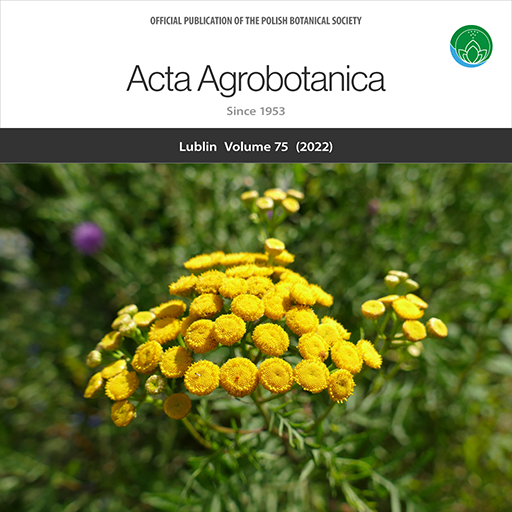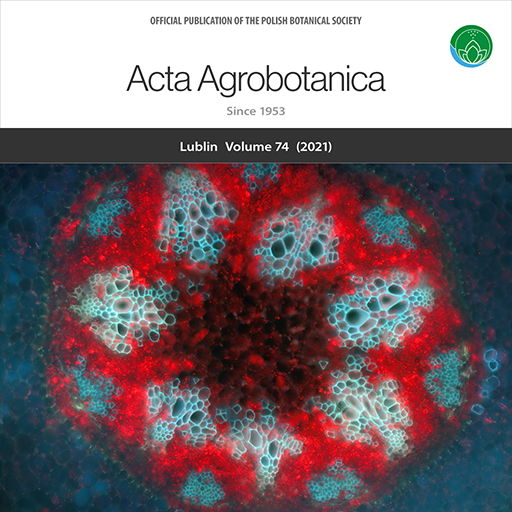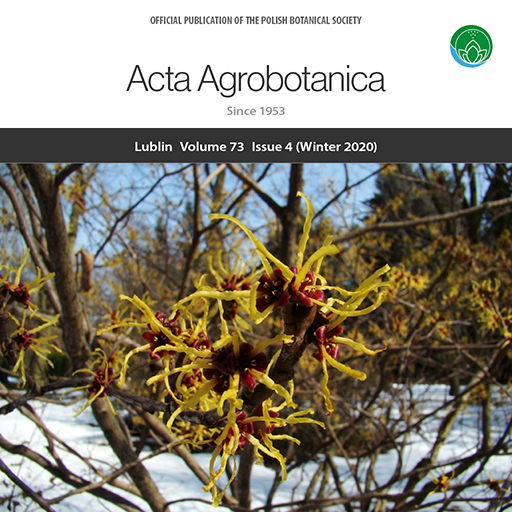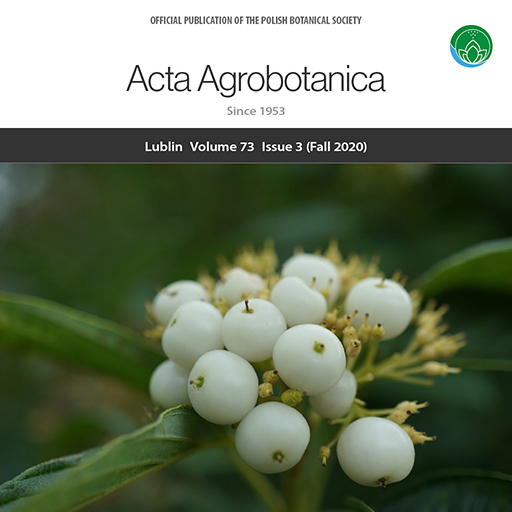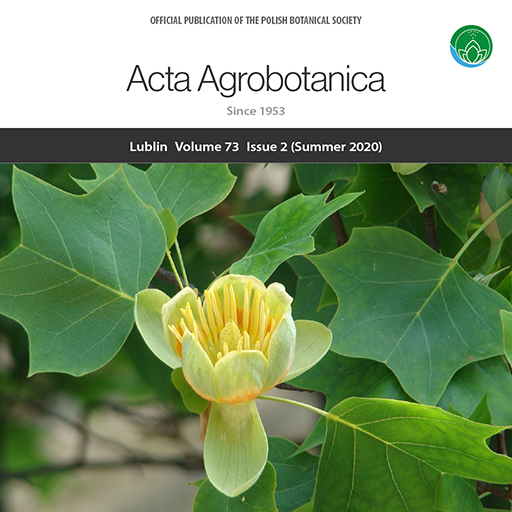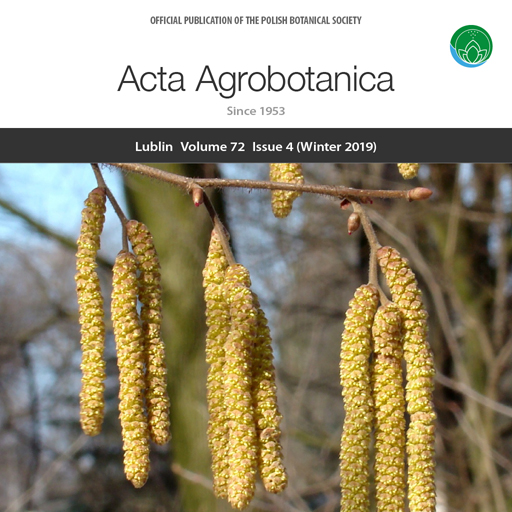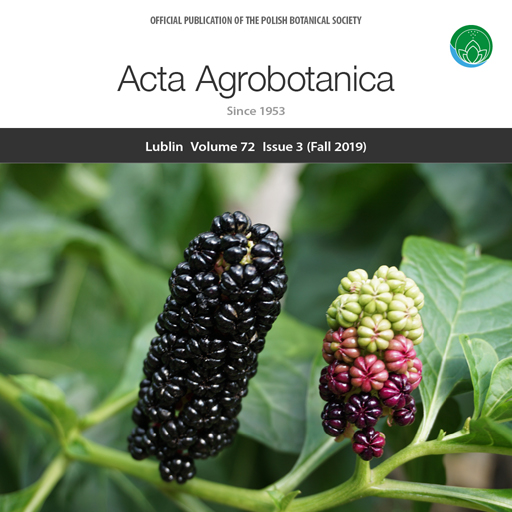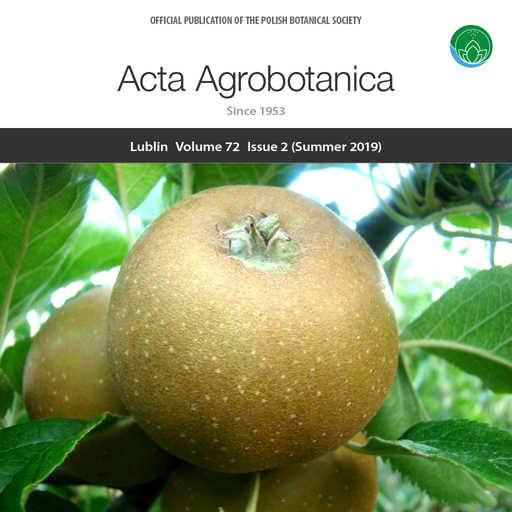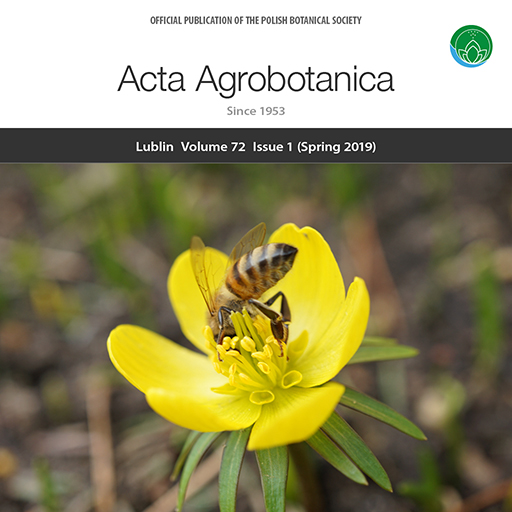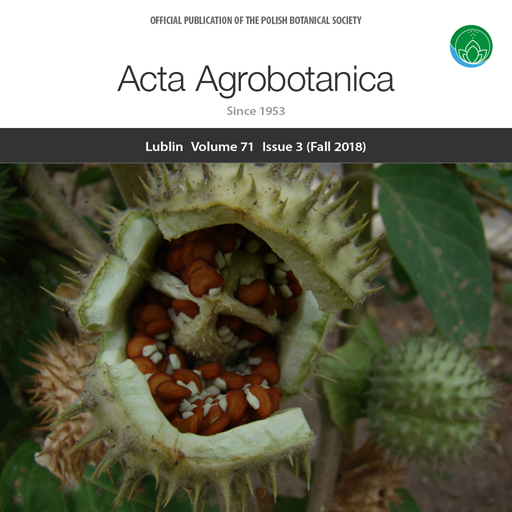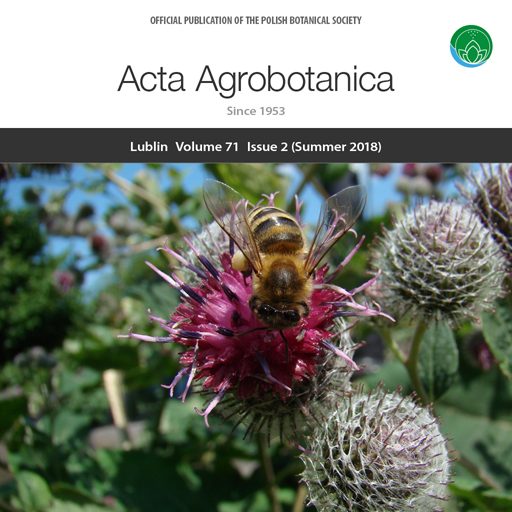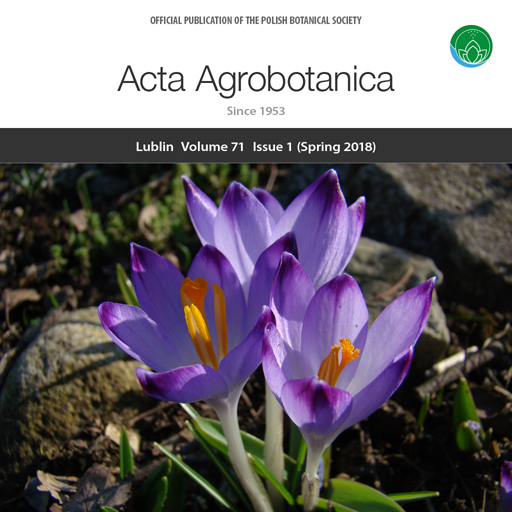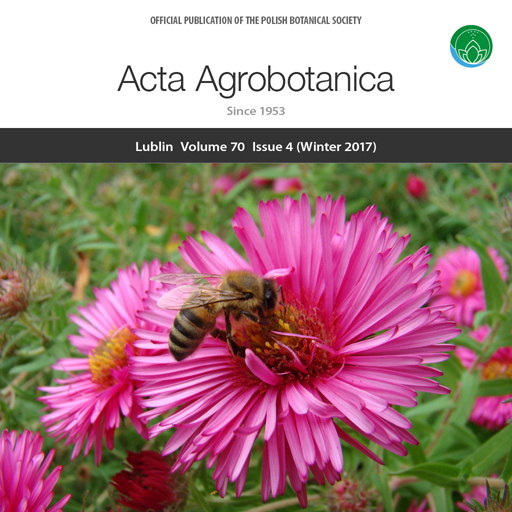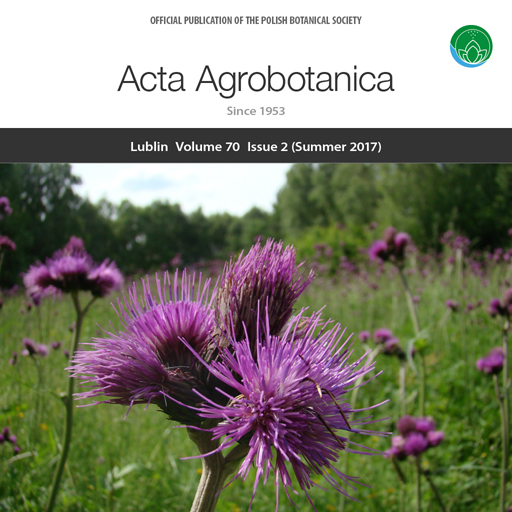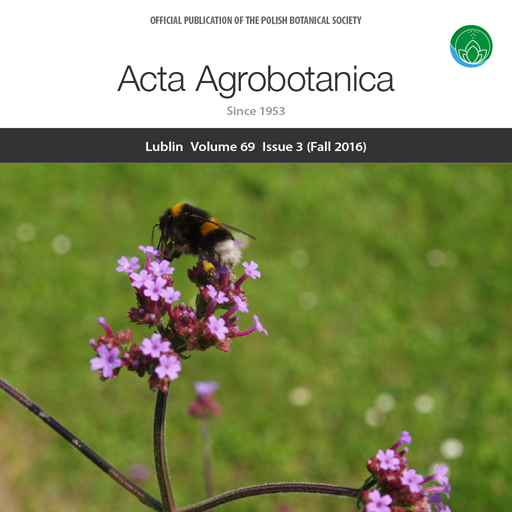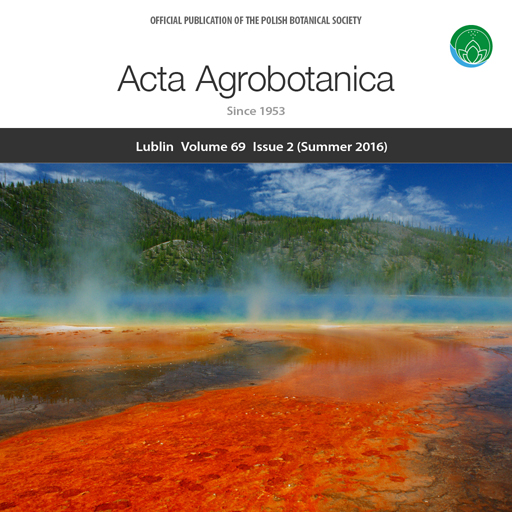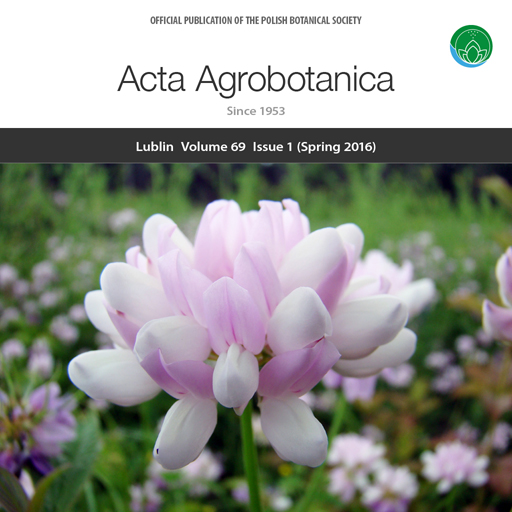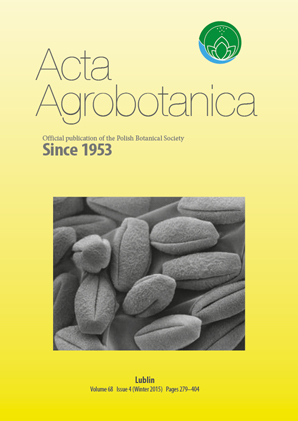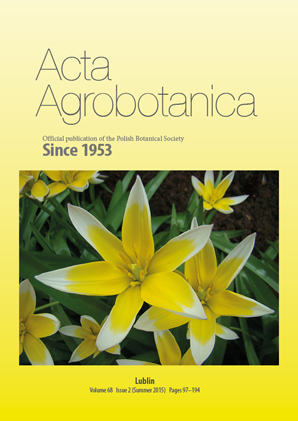2022
Vol 75 (2022)
On the cover Tanacetum vulgare L. (Asteraceae) is a perennial plant native to Europe and Asia. In America, it has become invasive. Its flower scent is similar to that of camphor. Its leaves and flowers contain thujone and can be toxic.
[Author: Aneta Sulborska]
2021
Vol 74 (2021)
On the cover Stele cross section of broad bean (Vicia faba L.) tap root; fresh hand section, UV-induced autofluorescence.
[Author: Barbara Łotocka]
2020
Vol 73, No 4 (2020)
On the cover Hamamelis japonica (f. Hamamelidaceae) is a shrub native to North America and Canada. In Poland, it flowers in December–March. Each flower has four slim strap-shaped 0.95–1.91-cm long petals. The flowers are homogamous and self-incompatible. They emit a faint odor, bear nectar, and produce abundant sticky pollen.
[Author: Aneta Sulborska]
Vol 73, No 3 (2020)
On the cover Cornus alba (f. Cornaceae), native to Eastern and Central Asia, was introduced as an ornamental plant worldwide due to its notable traits, i.e., red stems, nice appearance through fall and winter, and white drupelets having nutritional and therapeutic values.
[Author: Aneta Sulborska]
Vol 73, No 2 (2020)
On the cover Liriodendron tulipifera (Magnoliaceae Juss.) is a huge tree (ca. 35 m) native to Eastern North America. In cultivation, it blooms in June, with surprising extraordinary large (ca. 10 cm), cup-shaped, pale green or yellow flowers.
[Author: Aneta Sulborska]
Vol 73, No 1 (2020)
On the cover Cornus mas L. (cornelian cherry) is valued for its early spring bloom. The plant develops tiny four-petaled flowers arranged in eye-catching inflorescences surrounded by showy yellowish bracts, which attract pollinators.
[Author: Aneta Sulborska]
2019
Vol 72, No 4 (2019)
On the cover Male catkins on Corylus avellana L. (common hazel) are present on the plant through the winter, giving a little color to the sad winter garden. In very early spring, common hazel plants produce large amounts of pollen.
[Author: Aneta Sulborska]
Vol 72, No 3 (2019)
On the cover The ornamental species Phytolacca acinosa Roxb. (f. Phytolaccaceae) originates from Asia and has been locally naturalized in Europe. The fruit, defined as a berry, is shiny purple-black at maturity. The species has an interesting chemistry and is being investigated as a potential anti-AIDS drug.
[Author: Aneta Sulborska]
Vol 72, No 2 (2019): Biostimulation and biofortification of crop plants
On the cover A beautiful ripening apple fruit ‘Egremont Russet’ is going to delight the consumer with its taste in fall. High quality of fruits is possible to achieve after application of biostimulants to apple trees at the stage of flowering or fruiting. Application of biostimulants is a modern approach to stimulation of fruit development and enhancement of its resistance to stressful conditions, e.g., too low temperatures in spring, drought, or pathogenic diseases. It also has a positive impact on the yield performance and fruit quality traits at harvest.
[Author: Aneta Sulborska]
Vol 72, No 1 (2019)
On the cover Eranthis hyemalis (L.) Salisb. (winter aconite) is an early spring geophyte. The plant is attractive to honeybees due to the large quantity of produced nectar and pollen. The flowers have small cup-like nectaries derived from modified petals.
[Author: Aneta Sulborska]
2018
Vol 71, No 4 (2018)
On the cover Experience the beauty of winter seen on Rhus typhina L. (Anacardiaceae). The shrub with picturesque branches produces bright red drupes in erect, pyramidal clusters.
[Author: Aneta Sulborska]
Vol 71, No 3 (2018)
On the cover Datura stramonium L. (Solanaceae) is a highly poisonous plant considered a noxious weed and posing a threat to agricultural fields and pastures.
[Author: Aneta Sulborska]
Vol 71, No 2 (2018)
On the cover Arctium tomentosum Mill. (Asteraceae) – woolly burdock – a double-faced summer flowering plant. It is native to Eurasia, where it has long been considered as an edible plant and a rich source of secondary metabolites for the pharmaceutical industry. Insect visitors eagerly consume nectar and pollen provided by the rose-purple disc florets. However, in North America, the species tends to be noxious invasive plant.
[Author: Aneta Sulborska]
Vol 71, No 1 (2018)
On the cover Crocuses (Iridaceae) are one of the first signs of spring. The cup-shaped flowers are known for their enormous colours – white, yellow, mauve, and lilac – which make a bloom parade in ornamental spring gardens.
[Author: Aneta Sulborska]
2017
Vol 70, No 4 (2017)
On the cover Bee-friendly flora is a tool for pollinator conservation. Ornamental Symphyotrichum novae-angliae (L.) G. L. Nesom can play an important role in providing nectar and pollen food for honeybee (Apis mellifera) late in the season.
[Author: Aneta Sulborska]
Vol 70, No 3 (2017)
On the cover An unusual plant – Orobanche caryophyllacea Sm. (Orobanchaceae). In Poland, the species is protected and mainly occurs in thermophilous habitats. Plant species from the genus Orobanche have no chlorophyll and parasitize various plant species. In heavily infested areas, Orobanche species can cause total crop failure. However, during flowering, Orobanche species guide pollinators with floral scent and attract with abundant nectar.
[Author: Aneta Sulborska]
Vol 70, No 2 (2017)
On the cover The full bloom of the brook thistle Cirsium rivulare (Jacq.) All. on wet mountain meadow at the turn of spring and summer. This herbaceous perennial plant is a nectar and pollen yielding species highly attractive to various pollinating insects.
[Author: Aneta Sulborska]
Vol 70, No 1 (2017): Plant–animal interactions
On the cover A cocoo wasp Hedychrum gerstaeckeri (Hymenoptera, Chrysididae), feeding on pollen of a daisy fleabane (Erigeron annuus) – an example of complexity of plant–animal interactions. Hedychrum gerstaeckeri is a kleptoparasite laying eggs in the nests of Crabronidae wasps (e.g., Cerceris rybyensis, Philantus triangulum), and exploiting the eggs, larvae and food deposits of the host. The Crabronidae wasps in turn provide their larvae with hunted honey bees (Apis mellifera). All these adult hymenopterans feed on pollen and nectar.
[Author: January Weiner]
2016
Vol 69, No 4 (2016)
On the cover With regard to the marigold (Tagetes patula hybrid, Asteraceae), let us recall the summer, where we could admire its beautiful, showy “double” flowers. Plants with “double” flowers are especially attractive to horticulturists who recommend it for various garden arrangements. However, since such plants do not provide nectar and pollen, they cannot be advised for pollinator-friendly gardens.
[Author: Aneta Sulborska]
Vol 69, No 3 (2016)
On the cover Verbena bonariensis is a stylish perennial that has been enjoying a great resurgence of interest recently. It blooms from June to September and magnets bees (e.g., Bombus terrestris) and butterflies. The plant shape makes it perfect to use at the front, middle, or back of garden borders.
[Author: Bożena Denisow]
Vol 69, No 2 (2016): Climate change impact on plant, plant communities, and crop production
On the cover The Grand Prismatic Spring, located in the Yellowstone National Park, Wyoming, USA is one of the most beautiful wonders of nature. Climate change will affect all Yellowstone ecosystem functions, including the composition of fauna and flora, snow cover and water levels, vegetation growth, the movement of wildlife, and fire frequency. If we do not take action to reduce the causes for progressing climate change, the Grand Prismatic Spring and other extraordinary ecological treasures of the world will be lost for our future generations to admire.
[Author: Dariusz Piotr Malinowski]
Vol 69, No 1 (2016)
On the cover Inflorescence of Securigera varia (L.) Lassen, syn. Coronilla varia L., the plant common in meadows and ruderal sites; used for soil rehabilitation; a food source for pollinators.
[Author: Aneta Sulborska]
2015
Vol 68, No 4 (2015): Airborne allergenic pollen – across geographical regions
On the cover Pollen grains of Acer negundo from the aerosol of Lublin seen by scanning electron microscopy.
[Author: Janusz Matusiewicz]
On the cover we present new journal logo. It refers to essential trio – water, nutrition, reproduction. These are the prerequisites of plant survival and the long-term potential of our species: drivers of life, genetic variability, evolution. They combine different levels of biological organization – from the molecular and cellular levels to the ecosystem.

